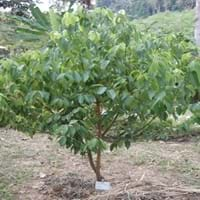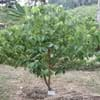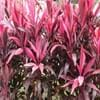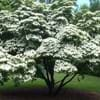Life Span
Perennial
Perennial
Type
Tree
Flowering Plants, Fruits, Trees
Origin
Southern Asia, India
Anatolia, Asia, Europe, Iran, Maghreb, Morocco, Norway, The Hiamalayas
Types
Pani Kurundu, Pani Kurundu
Flowering Cherries, Sour Cherries, Sand Cherries, Sweet Cherries, Capulin Cherries
Habitat
Farms, Open Forest, Riverbanks, Rocky areas, Tropical rainforest, Tropical regions
Forest edges, Wild, Woods
USDA Hardiness Zone
10-15
4-8
Sunset Zone
H1, H2, 23, 24
4, 5, 6, 7, 15, 16, 17
Habit
Oval or Rounded
Upright/Erect
Flower Color
White, Light Yellow
White
Flower Color Modifier
Bicolor
Not Available
Fruit Color
Purple, Black
Red
Leaf Color in Spring
Light Green, Dark Green, Pink
Dark Green
Leaf Color in Summer
Dark Green
Orange
Leaf Color in Fall
Dark Green
Orange
Leaf Color in Winter
Dark Green
Orange
Leaf Shape
Small elliptic
Oblong
Plant Season
Spring, Summer, Fall, Winter
Spring, Summer
Sunlight
Full Sun, Partial Sun, Partial shade
Full Sun, Partial shade
Type of Soil
Sand
Loamy, Well drained
The pH of Soil
Acidic, Neutral
Slightly Acidic
Soil Drainage
Average
Average
Bloom Time
Late Spring, Early Summer, Summer, Late Summer, Early Fall, Fall
Early Spring, Spring
Tolerances
Shade areas
Heat And Humidity, Not Available
Where to Plant?
Ground
Ground
How to Plant?
Divison, Seedlings, Stem Planting
Grafting, Seedlings, Transplanting
Plant Maintenance
Medium
Medium
Watering Requirements
Average Water Needs, Needs watering once a week
Never Over-water, Over-watering can cause leaf problems or root diseases, Prefer drip-irrigation instead of Over-head watering, Water twice a day in the initial period
In Summer
Lots of watering
Lots of watering
In Spring
Moderate
Moderate
In Winter
Average Water
Average Water
Soil pH
Acidic, Neutral
Slightly Acidic
Soil Type
Sand
Loamy, Well drained
Soil Drainage Capacity
Average
Average
Sun Exposure
Full Sun, Partial Sun, Partial shade
Full Sun, Partial shade
Pruning
Remove damaged leaves, Remove dead branches, Remove dead leaves
Don't prune in the fall, Prune if you want to improve plant shape, Prune in late winter, Remove dead or diseased plant parts, Remove deadheads
Fertilizers
fertilize in growing season, Water soluble fertilizers
All-Purpose Liquid Fertilizer
Pests and Diseases
fungus, Insects, Leaf spot, Mites, Red blotch
Aphids, Bacterial Canker, Black Knot, Brown Rot, Caterpillars
Plant Tolerance
Drought
Drought
Flowers
Insignificant
Yes
Flower Petal Number
Single
Not Available
Fragrant Bark/Stem
Yes
No
Foliage Texture
Medium
Not Available
Foliage Sheen
Glossy
Not Available
Allergy
Avoid during Pregnancy, drowsiness, Vomiting
Swelling in the face
Aesthetic Uses
Not Available
Showy Purposes
Beauty Benefits
Good for skin and hair, Improve hair condition, Improve skin condition, Making cosmetics, Skin Problems
Not Available
Environmental Uses
Air purification, Food for insects
Air purification
Medicinal Uses
Cold, constipation, Diabetes, Diarrhea, Menstrual Disorders, Upset stomach
Arthritis, Gout, Kidney problems, Rheumatoid arthritis, Swelling
Part of Plant Used
Bark, Seeds, Whole plant
Flowers, Fruits
Other Uses
Air freshner, Condiment, Employed in herbal medicine, For making oil, Making Perfumes, Oil is used in perfume, soaps, creams, etc., Used As Food, Used as primary flavor in Italian Liqours, Used for its medicinal properties, Used as a spice
Wood is used for making furniture
Used As Indoor Plant
Sometimes
No
Used As Outdoor Plant
Yes
Yes
Garden Design
Edible, Feature Plant, Shade Trees, Tropical
Not Available
Botanical Name
CINNAMOMUM verum
Prunus avium
Common Name
Cinnamon, Cinnamon Bark Tree
Cherry Tree
In Hindi
दालचीनी
चेरी का पेड़
In German
Zimt
Kirschbaum
In French
Cannelle
Cerisier
In Portuguese
Canela
árvore de cereja
In Polish
Cynamon
wiśniowe drzewo
In Latin
cinnamomum
Cherry
Phylum
Magnoliophyta
Magnoliophyta
Class
Magnoliopsida
Magnoliopsida
Family
Lauraceae
Rosaceae
Clade
Angiosperms
Angiosperms, Eudicots, Rosids
Tribe
Not Available
Not Available
Subfamily
Cassythoideae
Not Available
Number of Species
Not Available
Not Available
Importance of Cinnamon and Cherry Tree
Want to have the most appropriate plant for your garden? You might want to know the importance of Cinnamon and Cherry Tree. Basically, these two plants vary in many aspects. Compare Cinnamon and Cherry Tree as they differ in many characteristics such as their life, care, benefits, facts, etc. Every gardener must at least have the slightest clue about the plants he wants to plant in his garden. Compare their benefits, which differ in many ways like facts and uses. The medicinal use of Cinnamon is Cold, constipation, Diabetes, Diarrhea, Menstrual Disorders and Upset stomach whereas of Cherry Tree is Arthritis, Gout, Kidney problems, Rheumatoid arthritis and Swelling. Cinnamon has beauty benefits as follows: Good for skin and hair, Improve hair condition, Improve skin condition, Making cosmetics and Skin Problems while Cherry Tree has beauty benefits as follows: Good for skin and hair, Improve hair condition, Improve skin condition, Making cosmetics and Skin Problems.
Compare Facts of Cinnamon vs Cherry Tree
How to choose the best garden plant for your garden depending upon its facts? Here garden plant comparison will help you to solve this query. Compare the facts of Cinnamon vs Cherry Tree and know which one to choose. As garden plants have benefits and other uses, allergy is also a major drawback of plants for some people. Allergic reactions of Cinnamon are Avoid during Pregnancy, drowsiness and Vomiting whereas of Cherry Tree have Swelling in the face respectively. Having a fruit bearing plant in your garden can be a plus point of your garden. Cinnamon has no showy fruits and Cherry Tree has showy fruits. Also Cinnamon is not flowering and Cherry Tree is flowering. You can compare Cinnamon and Cherry Tree facts and facts of other plants too.





